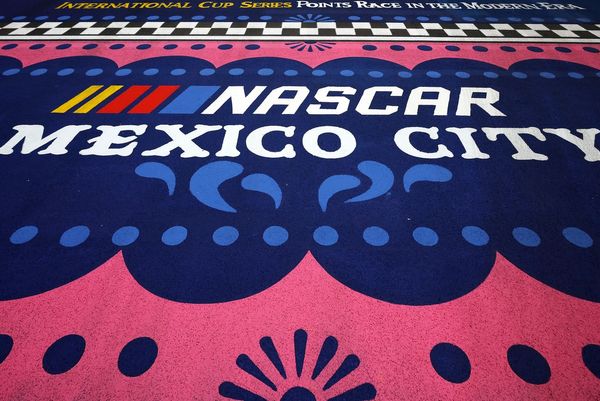The Future 500 network offers more than just the chance to meet like-minded people in social circumstances. It also presents lucrative business opportunities, as these four blossoming relationships prove

Neil Fairbrother and Aiden Byrne
Like many chefs, Aiden Byrne doesn't do cocktail parties. The head chef of the Dorchester Grill would rather have his head down in the kitchen. 'It's not my cup of tea, I always feel like an alien at those things,' admits the Liverpool lad. But he thought he would rock up to the Courvoisier The Future 500 event earlier this year to check it out before returning to his pans. Then he met Neil Fairbrother.
Fairbrother is the founder of web TV company pod3.tv. 'Web TV has come of age, more people are using the internet for TV-style entertainment than ever before, and more people are taking podcasting seriously,' he says.
And it's not just for teenagers. 'It's also viewed by well-educated adults with disposable incomes in positions of influence,' insists Fairbrother, who used to be in marketing.
'I don't have a media mindset so we can bring fresh ideas to the business,' he justifies. And his latest show, Made in Great Britain, is certainly fresh.
Most chefs do the TV cookery programme first and then publish the recipe book. Byrne did things the other way round. First came the book — called Made in Great Britain — then came the cookery programme, made in conjunction with Fairbrother thanks to their meeting at the Courvoisier Future 500 event. And it's the first simultaneous launch of a web TV show and a book, too, apparently. 'We both said we should do a cookery show. It was as simple as that,' says Fairbrother.
Made in Great Britain celebrates Britishness. After all, Byrne was taught by British chefs and, in his words, is a by-product of how British food has come on in the last 15 years. 'British food has, for a long time, had a pretty bad press, unfairly in my opinion,' writes Byrne, in the book. 'But it does, in fact, have an extremely rich and varied history that stretches right back to Roman times. One of the key characteristics is a willingness to adopt and embrace other cooking styles and ingredients that were once foreign and exotic, and which are now staples. Another key point is the fantastic produce that is available to us in Britain.'
Too right. And Byrne and Fairbrother aim to bring that produce even closer to us. Byrne intersperses cookery demonstrations with visits to food producers and farmers' markets. You can download the programmes (for free) from the website, pod3.tv, or from iTunes.
There will be six shows in all, each running for half an hour. 'It follows the structure of the book with lots of recipes filmed at the Dorchester, and lots of filming on location with suppliers,' explains Fairbrother.
That morning, the pair had just got back from filming with micro-salad whiz Richard Vine, darling of many top restaurants, and the following day they were destined for a turkey farm near Maidenhead. 'It's really exciting to bring the book alive. Neil is an up-and-coming producer and I'm an up-and-coming chef — we work well together. And what I really like about what Neil is doing is that it is cutting-edge, and it's great to be a part of that,' says Byrne.
Though Byrne is not exactly new to our TV screens: he's appeared on BBC's Masterchef and Market Kitchen. 'I love being on telly. There's so much more you can say on screen that you can't fit in a book,' he says.

Sam Bompas and Huw Gott
Sam Bompas makes jelly. But forget the lurid cubes you ate when you were a kid at birthday parties — these are posh jellies, in extravagant moulds, made of the best ingredients, starting at £300, and feeding potentially hundreds.
Along with partner, architect Harry Parr, Bompas founded Jellymongers in June 2007. Making a few jellies at first, which turned into many more as the word spread, their designs have become more wild as their business has blossomed. 'Everyone starts laughing when they see our jellies. That's the secret to our success, I think,' he says.
Their favourite jelly to date? 'One modelled on St Paul's cathedral,' replies Bompas. Bompas and Parr used this one to launch the company, but have fine-tuned it since, recently making a glow-in-the-dark version for Mark Ronson's birthday party, which was made with absinthe. 'Our design meetings are quite interesting. We want to make food that engages people — on so many different levels,' he says.
You can see why an architect's input might be vital, though. 'Harry uses his skills to create a 3D model, and then the mould is laser cut,' explains Bompas, who admits that he has always been rather partial to jelly.
'Did you know that jelly was huge in Victorian times? It was the centrepiece for every smart dinner. In fact, we were the world leaders in jelly-making — even the French made pilgrimages to watch and learn from us,' he says.
Among the many businesses that Jellymongers has attracted is bar operator and consultant The Underdog Group, co-founded by Huw Gott, who Bompas met last February at the Courvoisier The Future 500 networking event.
The pair are currently working on a jelly for Underdog's steak and cocktail bar Hawksmoor, in Spitalfields. Nicholas Hawksmoor is, of course, a famous 18th-century London architect who designed many landmark buildings in the capital — including the one that inspired the restaurant's name just up the street, and is inspiring the jelly itself. 'We're still working on a prototype. We haven't got it quite right yet. It looks great but it doesn't have the optimum mouth feel yet,' explains Bompas.
'I thought a big wobbly jelly for Hawksmoor was just what we needed,' agrees Gott, who had read about Jellymongers' now legendary St Paul's masterpiece, and who plans to serve their own version for larger groups after their steaks.
Underdog was formed in 2003 with the opening of Redchurch in Shoreditch, and then funky Mexican hangout, Green and Red, nearby. The awards followed, including Time Out gastropub of the year for The Marquess, and one for Hawksmoor. Co-founded with partner Will Beckett, the pair have now decided to focus the bar and restaurant side of the business almost solely on Hawksmoor, selling The Marquess and Redchurch to enable them to roll out more. 'Hawksmoor is the future for us — the jellies, too, hopefully. We want something dramatic that looks good and tastes great, and is a bit quirky and interesting,' explains Gott.
Hawksmoor's drinks maestro is one Nick Strangeway, a legend on the London bar scene. He is particularly excited about the new jellies, having worked on his own booze-laden versions for the last few years (including an interesting take on a gin fizz).
The pair had already discussed replicating the Hawksmoor-designed Spitalfields church in a jelly. 'But you would need so much gelatine just to make the spire stand up — and that wouldn't taste very good — so now we are looking at reproducing another Hawksmoor building,' reveals Gott, who admires Jellymongers' business savvy. 'It's amazing that they ended up in this narrow niche — and that it is working very well for them,' he praises. We think that this is one relationship that won't wobble.

Anna Scaife and Angie De Napoli
Innovators in the fashion industry inspire, delight and appeal to your inner eccentricities. This couldn't be more true of accessories designer Anna Scaife, who's forging the way for edgy, whimsical jewellery that's currently making a big impact in the UK and Japan.
Scaife — who counts Kelly Osbourne, Kate Moss and Gwen Stefani as avid fans — likes to inject her designs with tongue-in-cheek wit: sort of Harajuku Girl meets public school darling. Her bijou Newburgh Street store is testament to this: the kitsch, rainbow-hued selection of hairclips, necklaces, brooches and earrings in cherry, lipstick, and ice-cream shaped guises lend the shelves their own brand of individuality, a look she describes as 'a little bit of fantasy.'
With a great 'plucked from obscurity' story behind her – she started out selling £15 bracelets on a stall at Portobello market before a buyer from Harvey Nichols spotted her and bought all her stock — she's just launched the collaboration line with the Laura Lees fashion label. Scaife met Lees' business partner Angie De Napoli at Courvoisier's inaugural Future 500 network event last November. Taking adjacent stands encouraged the two to pool their creativity into a fantastic line of head pieces and brooches. 'I saw the skull image and the heart with the spear through it and could immediately see them as oversized brooches and statement head-pieces', Scaife remembers. 'It's worked really well. We've kept the uneven edges to retain Laura's signature handwriting. It's a really nice, exclusive capsule collection.'
Scaife's inspiration is 'a mix of underground art and places I travel to, particularly Japan. But I also love vintage jewellery like Biba and Bakerlite.' Nominated for the Courvoisier The Future 500 network by a friend, she was stunned when last year she won the fashion and retail category and since has seen the profile of her label's — Anna Lou of London — consumer grow up. 'It's nice to appeal to a thirtysomething who might come into the shop and think "oh that's quite fun." It's meant to make you feel you have something special on'.
So what's next? 'I'm launching my own line in Topshop. At the moment we're developing a Brit-centric kooky collection for young tourists.' A particular favourite is the union flag brooch emblazoned with a 'lady of the manor' slogan. 'I've also been asked to collaborate with Jean Charles de Castelbajac (a graphic-led French fashion designer), which is very exciting. Plus I'm launching wall pieces next year'.
De Napoli shares this love of eccentric fashion design. Mastermind of wholesale fashion agency Rubywear, De Napoli's passion is for spotting talent and trends ahead of the sartorial curve.
A solid background in retail and merchandising led her to establish Rubywear in 2007. Working from her Fouberts Place showroom (a hop from Scaife's shop), she showcases the designs of five distinctive labels. One of these is the Laura Lees Collection which is 'a play on embroidery and uses images such as skulls, hearts and butterflies as an integral part of her designs.'
De Napoli was struck by the natural fit of the Laura Lees and Anna Lou labels. 'I thought the guerrilla embroidery would interpret really well onto these cute Swarovski crystal encrusted accessories. My favourite pieces are the safety pin and the speared double heart,' she enthuses.
Today the Laura Lees Collection label has earned a deserved place in the hearts of many a fashion editor looking for idiosyncratic hand-embroidered pieces that command attention. Lees' line for Topshop, which Angie co-created, has also been a runaway success. 'It was meant to go into the store for six months — it stayed two years,' she proudly divulges. She's currently working on a collaboration with USC and has just launched a younger derivative of the Laura Lees collection entitled 'Little Miss Sew' via ASOS.
Despite her success, De Napoli remains down-to-earth and faithful to the anomalous values at the heart of the Laura Lees Collection. 'I'm interested in achieving impossibilities, not taking on regimented commercial plans. I love finding things that have not been seen before,' she confides. The collaboration show at London Fashion Week was a great example of this. 'We were mobbed, because we had a good point of difference. Anna's pieces added a lovely sparkle to the collection and showed how it had moved on.'
De Napoli is keen to extol the benefits of joining the dynamic Courvoisier network. 'It's a nice endorsement to have in return for your achievements in the industry. This collaboration gives us exposure in places that wouldn't have been possible before.' Next there's a possible Laura Lees Collection link-up with lingerie label Miss Lala's Boudoir and a potential expansion into handbags and shoes.
Judging by the swarm of vertiginous heels, runway-fresh tartans and out-there winged eyeliner on the crowd of fashionistas cooing over the oversized perspex head-pieces at that evening's launch party, it looks like De Napoli and Scaife are bang on the money for now.

Galahad Clark and Chloe Longstaff
Tucked away behind London's frenetic Brick Lane, the nerve centre of Chloe Longstaff's PR business, Canoe, is one of those loft-style affairs flooded with natural light. Specialising in outdoor sportswear, underground street-style clothing, trainers and ethical shoes, the office is crammed with acid-bright padded jackets, while racks of the funky hip-hop inspired trainers and quirky shoe-boots she promotes adorn the walls.
Longstaff is down to earth, with a razor-sharp business brain and her success is entirely self-driven. Founded on the ambitious, and arguably self-destructive, philosophy that her company sparked to life 'through the frustrations of a PR world that promised and didn't deliver', Canoe turns the notion of conventional PR on its head. 'We bring more of an advertising and design agency approach to what we do', she explains. 'Some people don't deliver because they use an old-school blueprint of PR, which is very black and white. We're constantly thinking of how campaigns can work on different levels.'
Longstaff has definitely got the essence of good PR right: live your brands and challenge people's perceptions. Set up in 2002, she chose the company name for simple reasons, 'if you're in a canoe in the middle of the river you see everything differently to the people on the bank', she says. This idea is shared by Galahad Clark, a seventh generation member of the English footwear dynasty Clarks.
The duo struck up a rapport through the Courvoisier The Future 500 network and, over the last six months, Clark has entrusted Longstaff with the PR and marketing direction of his ethical shoe venture, Terra Plana. Longstaff had 'admired the work Terra Plana had done for ages' before the network united them. She is a passionate advocate of sustainable fashion, so the connection was instant. 'Galahad's really inspirational. If he trusts you he'll give you complete control of something and he values an outside perspective,' she enthuses.
A few miles across town, Clark's Terra Plana head office nestles in London's South Bank, in an area known for its impressive shoe heritage. Since taking over the Terra Plana business at the end of 2002, Clark has pioneered the way in minimising the waste and toxins used in the shoe industry, through his own work and the other brands that fall under the company umbrella —Vivo Barefoot, Dopie, Worn Again and United Nude. 'Around 140 million tonnes of waste goes into UK landfill each year as a result of the shoe industry alone' he points out.
Clark's five brands substitute heavy metals (like chrome) for recycled aluminium, make their moulds from recycled EVA (a rubber foam), soles from latex and shanks from nylon, use natural leather and recycled materials, and have developed shoes that use the minimum materials possible. 'Win the materials game and you've won,' he enthuses.
The company scores every pair of shoes they manufacture on an eco-matrix that looks at efficiency, functionality, comfort and look (or 'urban respect'). His other notable achievement is that he manages to produce collections that don't compromise style for a low-carbon footprint. 'Sustainable design is good design and a part of that is how something looks,' he explains. 'In the shoe business your aim is to create iconic shoes with universal appeal.'
Clark has high hopes for his collaboration with Canoe: 'I respect what they can do a lot. I am looking to Chloe to guide me through the quagmire of marketing and PR.' They are now working together on the launch of the entirely eco-friendly flagship Terra Plana store in London's Westfield shopping centre. Courvoisier is stepping in to provide a bar for the main launch event to help the event go with a swing. Clark has also just set Longstaff his Christmas advertising budget.
Both have a voracious appetite for future success. Clark is intent on focusing more on Terra Plana and developing Vivo Barefoot (his brand that mimics the feeling of going shoeless). He's also planning a children's line and expects the business to grow around 50% next year. (They currently turnover about £5m each year).
Longstaff is fired up about her plans for Terra Plana. The first will be implementing a loyalty scheme to consumers to reward their green allegiances. 'Everyone in the Future 500 has a fascinating story, so if they can help you tell yours, that's great, she says. 'We're on the uphill now. Next season the sky's the limit,' they chime.







